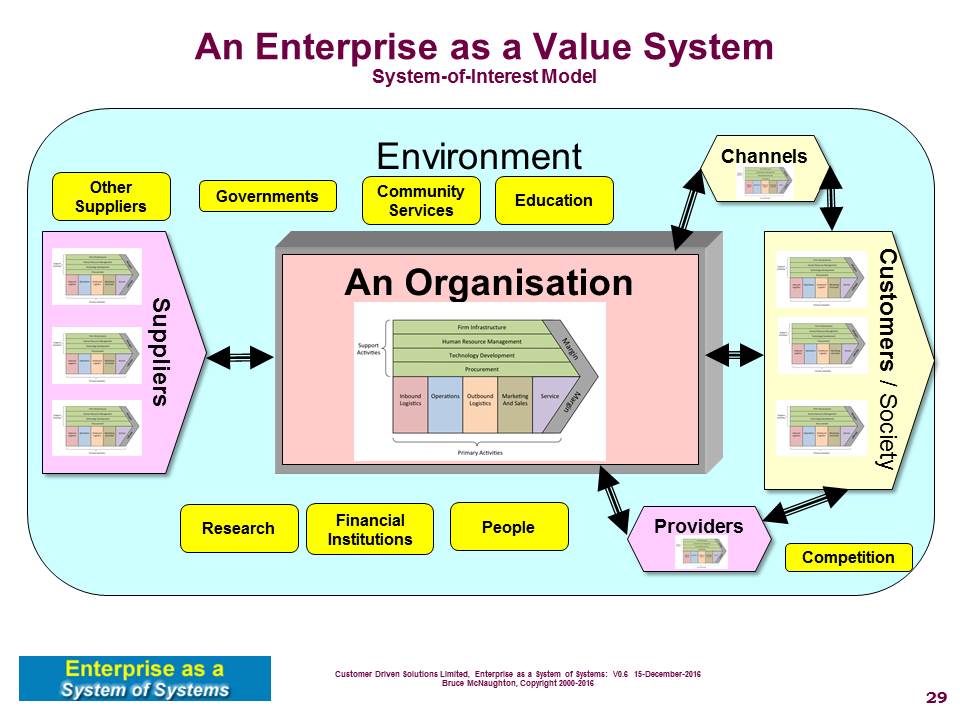Abstract System: Value System
Name: Value System
Based on: Enterprise (SoS)
The Value System is a concept described by Michael E Porter in his book Competitive Advantage
The Value System identifies all of the organisations that contribute to the value delivered to the end customer / consumer.
This concept builds on the concept of the Value Chain as a representation of a whole organisation that participates in this system.
The Value System is a network of organizations that deliver value to customers as part of an Enterprise as a system of systems.
The purpose of the Value System is to ensure that the value expected by the customers is actually delivered through the value system.
Systemic Measurable Variables
See the Measurable Systemic Variables for the Enterprise (SoS)
Systemic Capabilities or Functions
See the Capabilities or Functions for the Enterprise (SoS).
System States
See the States for the Enterprise as a SoS.
See the Stakeholders and Concerns for the Enterprise (SoS).
See the Environment for the Enterprise (SoS).
Each of the elements in the Value System is an organisation with a Value Chain. All of these organisations contribute to the overall purpose of the enterprise.

The model used for the Enterprise is shown above to highlight the elements of a value system. Each top level organization is a constituent system of the value system.

The Structure of the value system includes the following elements:
- The Supply Chain
- The Channels to Market
- Any Partners (Service Delivery or support)
Any organizations that are part of the main value delivery to customers will be included in the value system.
Configuration / Scenario:
Describes any configuration / scenario attributes for a specific system-of-interest. This may not be appropriate for all system descriptions (e.g. patterns or abstract systems).
Cyclical (Repeating / Regular) Processes
The typical cyclical processes are:
- Customer Sale to Cash in the Bank
- Customer Support through to Solution
- Procurement of Purchases
- Planning and Review
Development Life Cycle Processes
The typical development processes are:
- New Product / Service Development
- Acquire or Release Facilities and Personnel in Teams
The following references support this type of system-of-interest.